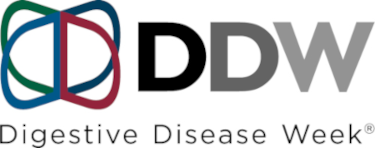Background: Glucose metabolism reprogramming is central to cancer development, particularly in colorectal cancer (CRC). Understanding specific glycometabolic characteristics in CRC is crucial for insights into tumor-immune interactions, treatment resistance, and metastasis. We present a comprehensive profile of glycometabolism reprogramming in CRC and introduce a novel prognostic risk model, highlighting SFRP2 as a key gene driving glycolysis and progression in high-risk CRC.
Methods: We developed a prognostic model based on 297 glycometabolism-related genes using LASSO and nomogram algorithms. The model's predictive efficacy was evaluated using ROC curves and Cox regression. Immune infiltration and checkpoint molecule differences in high-risk (RiskH) and low-risk (RiskL) groups were analyzed using CIBERSORT, TIMER, and TIDE scores. SFRP2 expression in CRC tissues and cells was examined via real-time PCR, Western blotting, and immunohistochemistry. SFRP2's role in tumor metastasis was studied in vitro and in vivo. ENO2 promoter transcriptional regulation by TCF4 was explored through deletion, mutagenesis, luciferase assays, and ChIP.
Results: Among the 297 genes, 51.2% (152/297) showed differential expressions between CRC and normal tissues, particularly in glycolysis, pentose phosphate, and biosynthetic pathways. Twenty-six genes were identified as prognostic regulators, with 19 forming the risk model. The GRG risk score outperformed various clinicopathological indices as an independent CRC risk factor. Risk score correlated significantly with clinicopathological stage, tumor size, lymphatic, and distant metastasis. The RiskH group exhibited higher immune checkpoint expression and more immune exclusion and dysfunction. SFRP2, upregulated in the RiskH group, indicated poor CRC prognosis and was linked to increased pyruvate and lactate levels. SFRP2 overexpression enhanced CRC metastasis via the TCF4/β-catenin axis, facilitating glycolysis by transcriptionally regulating ENO2. Conversely, ENO2 deregulation impeded SFRP2 downregulation-mediated CRC progression.
Conclusions: This study elucidates a comprehensive glycometabolism-related gene profile in CRC, proposing a novel prognostic model. The RiskH group's vulnerability to glycolysis and immune exclusion underscores potential therapeutic strategies for CRC treatment.

Figure 1. Glycometabolism Reprogramming in CRC: Prognostic Insights. (A-B) Heatmap and Volcano plot of glycometabolism-related differential expression genes (GRGs) in CRC. (C) GRGs' Gene Ontology and KEGG pathway analysis. (D) Circos plot illustrating GRGs interconnections. (E) Univariate Cox analysis for GRGs prognostic significance. (F) Gene-gene interaction network of 26 prognostic GRGs. (G) Trajectory analysis of independent variables. (H) Cross-validation error assessment. (I) Risk score-based patient outcomes. (J) Time-dependent ROC curves for CRC prognosis. (K-L) Comparative survival analysis in high-risk (RiskH) and low-risk (RiskL) CRC groups. (M-P) Risk score correlations with clinicopathological features. (Q) Prognostic nomogram construction. (R) ROC curve evaluation of nomograms, risk scores, and clinicopathological parameters. (S-T) Cox regression survival analysis using nomograms. (U-X) Immunological profile variations in RiskH and RiskL CRC.

Figure 2. SFRP2: A Critical Gene in High-Risk CRC Promoting Glycolysis and Metastasis. (A-E) Gene expression differences between high-risk (RiskH) and low-risk (RiskL) CRC groups. (F) Survival analysis identifying prognostic markers. (G-H) Protein interactions of GRG downstream targets. (I) Differential SFRP2 expression in RiskH vs. RiskL groups. (J) SFRP2's association with poor CRC prognosis. (K) SFRP2's link to pyruvate and lactate levels. (L-N) SFRP2 expression in metastatic or recurrent CRC. (O-P) SFRP2's role in CRC cell migration and metastasis. (R-S) Impact of SFRP2 on pyruvate and lactate accumulation, with β-catenin's crucial role in this process. (T-U) ENO2 upregulation following SFRP2 overexpression. (V-X) SFRP2/β-catenin axis influence on ENO2 transcription. (Y-Z) Analysis of β-catenin/TCF4-responsive regions in ENO2 promoters through deletion, mutation, and ChIP assays.




